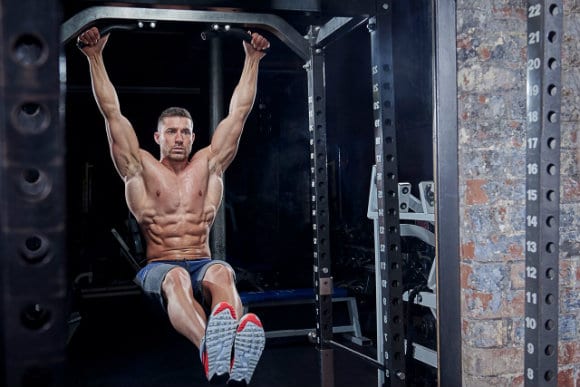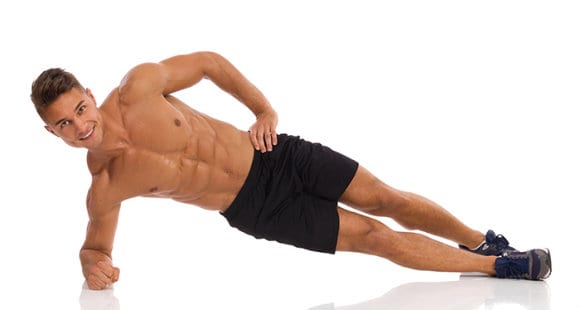By the healthiergang writer , medical student.
Lateral abdominals
- lateral or oblique abdominals they are two distinct muscle groups: the external obliques and the internal obliques. The external oblique abdominals are the superficial muscle bundle and are visible in the upper abdomen while the internal obliques are a deeper muscle bundle and are visible in the lower abdomen, near the pelvis.
- external obliques are those muscles that give the typical striations that are inserted in the rectus abdominis, the "six pack", while the internal obliques are more responsible for the V-shape of the pelvic area.
Both the oblique muscles if trained correctly they can give aesthetic and postural benefits, as well as help to create greater stability in the abdominal area and therefore prevent problems and decrease the dispersion of force in movements that involve both upper and lower parts of the body.
Discover Giulia's workout routine:
How to train them
Abdominal muscle training must be built on several criteria.
#1 First of all is that of train the muscles in all their functions.
#2 Secondly the frequency of training of these muscles must respond to the type of effort that these muscles are responsible for carrying out.
The abs are postural muscles and they are used to working practically the whole day.
To train them in the best way, therefore, a high frequency would be optimal, therefore also every day, with a consequent reduced duration of the session.
Finally, when it comes to training the abdominal muscles it is always important to consider the quality of the repetitions rather than the quantity of these.
This is a principle that is valid in general but it is more valid for the abdominals as in addition to making movements that are not profitable, it is easy to settle wrong motor patterns.
The Importance of Breathing
When training your abs, it is essential to know how breathe properly during the execution of the given exercise. A function of the abdominals is also to contribute to respiratory dynamics and they could also be obtained anti aesthetic results.
This last statement refers to the fact that if you do not breathe correctly, it is easy to promote the formation of an abdominal prominence (protruding abdomen). This problem occurs when during the abdominal contraction you push your belly out while holding your breath or inhaling.
This means that the abdominal muscles are trained to produce a distended and swollen abdomen and in fact this is precisely the result that is obtained.
With each repetition it is important begin with a contraction of the abdominal transversus muscle by exhaling and contracting the pelvic area.
Only after this first measure can the movement be started. The result is a more intense abdominal contraction as well as a stimulus of the transverse muscle, whose task is to "hold firm" the lower part of the abdomen.
You can imagine this muscle as a kind of belt whose fibers run horizontally from the lumbar area to the abdominal area. The contraction of this muscle "tightens" the lumbar area favoring greater stability. Proper training of this muscle, and the internal abdominals, results in a flat and thin abdomen.
The initial transversus abdominal contraction procedure applies to every abdominal exercise, obliques are no exception. Maintaining this contraction is all the more difficult the more demanding the movement is. In this regard it is reported the concept of quality rather than quantity.
Lateral Abdominal Exercises
To train the obliques there is no need for a lot of different exercisesi.
Just choose 3 or 4 different exercises medium or high intensity and perform them correctly. As previously mentioned, the abdominal training session must be practically daily and of short duration.
The best time to train your abs is on an empty stomach, for obvious reasons.
Below I propose a hypothesis of sitting focused on training the oblique abdominals.
Example session
? Leg rise circolari* 3-5 reps in super set with russian twist ** 10-15 reps. 4 sets, rest 60- 90 seconds.

* cling to a bar and, keeping the legs straight, flex the pelvis laterally and then make a sort of circle in the air and bring the legs to the opposite side, exhaling at the same time. The movement must include a constant flexion of the pelvis, not just moving the legs. A repetition involves a clockwise and an anti-clockwise turn.
** sit on the ground keeping the torso elevated by about 45 degrees and the abdominals contracted. At this point, rotate the trunk to one side exhaling and contracting the oblique abdominals. Always with the same movement rotate the torso on the opposite side. This is a repeat.
? Side plank 90 seconds per side

3 times per side. In this exercise it is important to keep the torso straight and keep the ribcage lowered and the abdominals in contact. take full, deep breaths.


























